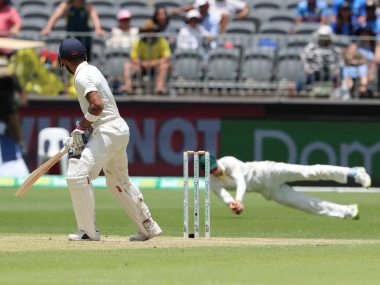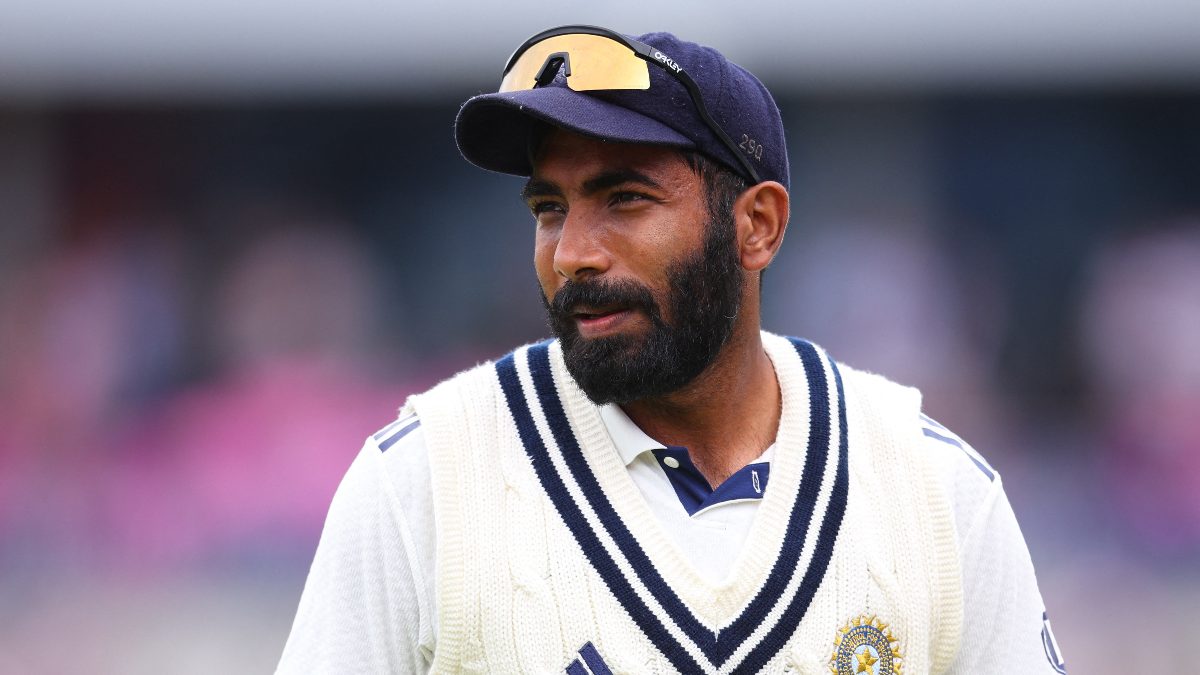Virat Kohli and drama are never too far from each other. In the second Test against Australia, Kohli was playing a knock for the ages on a testing Perth wicket. The only question that remained after Kohli raised his hundred and celebrated in his inimitable style was whether, years from now, we would see this highlight and remember it as a match-winning endeavour or another great effort in a lost cause overseas. When Peter Handscomb claimed a low catch in the slips and Kohli refused to walk, it was clear this moment will answer that question. As is the custom these days, umpire Kumara Dharmasena gave the soft signal as out. It meant that the third umpire needed to see ample proof to overturn the decision from the on-field umpire. [caption id=“attachment_5745151” align=“alignleft” width=“380”] Peter Handscomb takes Virat Kohli’s catch on day three of Perth Test. AP[/caption] Mind you, Kohli has been at the receiving end of the third umpire overruling the soft signal earlier this year in the IPL when his RCB teammate Tim Southee claimed a low catch. On that occasion, there was no clear evidence of the ball touching the ground before going into Southee’s hands, but the third umpire had incorrectly overruled the decision in batsman Alex Hales’ favour much to Kohli’s agony. Nigel Llong on this occasion saw multiple replays of the catch and when there wasn’t any conclusive evidence to overrule the soft signal, went by the book and upheld Dharmasena’s decision. Kohli was once again furious. He probably had a better view of the ball than the umpire and may have seen the ball bouncing before going into Handscomb’s hands, but his opinion on the matter doesn’t count for much. The view of the fielder who immediately signalled it was out didn’t matter either (Thankfully. The game can’t afford another meltdown of the kind that was created when Michael Clarke claimed Saurav Ganguly’s catch in the 2007-08 series and Ganguly took the fielder’s word on it). After a close call like that, the clamour on social media among fans was expected. Jasprit Bumrah added some fuel to the fire in his press interactions later in the day when he said that the team was surprised at the on-field umpire’s decision. The lack of a clear picture was unfortunate, but the umpires had followed the due process as per ICC laws, so there can’t be any denying the fact that the right decision was made and Kohli was out. When emotions are running high, the eyes show you what you want to see, so every Australian fan sees the Kohli dismissal as entirely fair, while every Indian fan feels hard done by the umpires. When KL Rahul took the last catch to dismiss Josh Hazlewood to wrap up the Adelaide Test match, the shoe was on the other foot. Rahul was also the center of the action when he had claimed Joe Root’s catch at Trent Bridge earlier in the year, the soft signal, on that occasion, was out and the England captain was given the marching orders when the images for the third umpire weren’t clear enough to overrule the on-field decision. As they say with umpiring calls, you may get a rough one sometimes, but it evens out over a long enough period. When we keep emotions aside and objectively evaluate this system of soft signal in place these days, two aspects need to be looked at: how the technology works, and how the system of natural justice works. On the technology part, when you slow down footage from the cameras that are projecting three-dimensional action on a two-dimensional screen, some obvious optical illusions are created. Also, not all cameras are at ground level, and the playing area itself often has a slope leading to foreshortening of images that further make the decision harder for the umpire. When technology can’t give you the complete answer, the game errs on the side of human judgement. The umpires are still an essential part of the game, and you have to respect what they see on the ground in real-time. The same principle is followed when we go by umpire’s call in case of close LBW decisions. Technologies like Hawk-Eye that predict the trajectory of the ball aren’t 100 per cent accurate. Any phenomenon measured using any human-made instrument will always have some degree of error. In scientific or statistical finding, such error is often reported along with the captured data. When we are upholding the umpire’s call and give a batsman not out based on the original call from the umpire even when the technology shows that the ball is just clipping the bail, we are merely acknowledging this inherent error in the device used to capture and predict the ball trajectory. You may argue that in case of run out, the technology is 100 per cent accurate, but sometimes, when the broadcaster doesn’t have high-speed cameras, we miss the verdict between two frames: the one that shows bails intact and bat on the line, and the other that shows bat inside the line with bails dislodged. Giving the batsman the benefit of the doubt is the only option left in that case since it’s impossible for the on-field umpire to see the split screen with his naked eye. Whenever we call upon the technology to help us in taking a decision, we take into account whatever inherent limitations that technology brings with it. If the technology improves, we alter our systems to consider these improvements and make better judgments. That’s how any justice system or any body of law is framed. Even courts deciding on matters of life and death can make decisions under a framework that stipulates them to make the best possible choice with the available evidence. The system errs only when it’s inconsistent, not when it sticks to the rules and principles laid down by the collective effort of many minds. This doesn’t mean that all debate over Kohli’s dismissal is wrong. An open discussion is the first step towards acknowledging a possible limitation in the system and strive for continuous improvement. But it’s also important to see the bigger picture and historical perspective of the rules that are in place and why they are the best we have at the moment.
The contentious dismissal of Virat Kohli on day three of Perth Test yet again raised a debate on the soft signal rule.
Advertisement
End of Article


)

)
)
)
)
)
)
)
)



